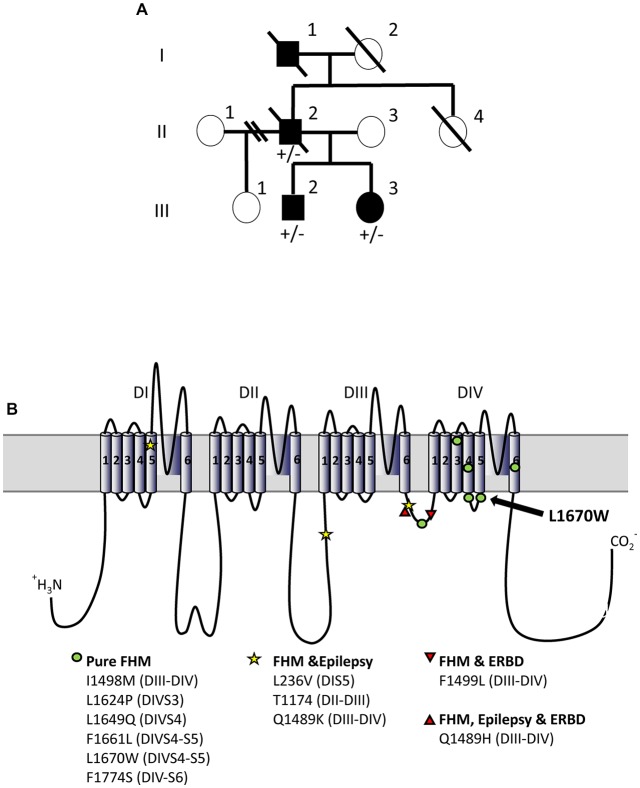Figure 1.
L1670W familial hemiplegic migraine (FHM-3) family. (A) Family pedigree. The proband is patient II-2. No genetic test was performed on patient I-1. Squares are representative of men and circles of women. Plain symbols represent affected individuals and empty symbols unaffected individuals. (B) Schematic representation of NaV1.1 alpha subunit and localization of FHM-3 mutations identified thus far; the mutation L1670W that we have studied here is highlighted with an arrow. Voltage-gated sodium channels are formed by four main domains (DI-IV), each one formed by six transmembrane segments (S1–6) connected by intracellular and extracellular loops; within each domain, S1–4 form the voltage sensing module (in which the positively charged S4 is the voltage sensor) and S5–6 form the pore module, with the intracellular loop between S4 an S5 that is the linker between the two modules. The intracellular loop between DIII-IV is the inactivation gate, which blocks the pore in the fast-inactivated states of the channels acting as a hinged lid. Slow inactivation depends on rearrangements of the pore domain. DIV is important for the coupling between activation and inactivation. Thus, most of the FHM mutations are in regions that are important for inactivation.

